Advanced treatment strategies in breast cancer: A comprehensive mechanistic review
- PMID: 37231668
- PMCID: PMC10450270
- DOI: 10.1177/00368504231175331
Advanced treatment strategies in breast cancer: A comprehensive mechanistic review
Abstract
Breast cancer is a destructive lump type that affects women globally. Despite the availability of multi-directional therapeutic strategies, advanced stages of breast cancer are difficult to treat and impose major healthcare burdens. This situation reinforces the need to identify new potential therapeutic compounds with better clinical features. In this context, different treatment methods were included such as Endocrine therapy, chemotherapy, Radiation therapy, antimicrobial peptide-dependent growth inhibitor, liposome-based drug delivery, antibiotics used as a co-medication, photothermal, immunotherapy, and nano drug delivery systems such as Bombyx mori natural protein sericin and its mediated nanoparticles are promising biomedical agents. They have been tested as an anticancer agent against various malignancies in pre-clinical settings. The biocompatible and restricted breakdown properties of silk sericin and sericin-conjugated nanoparticles made them perfect contenders for a nanoscale drug-delivery system.
Keywords: Breast cancer; breast malignancy growth pattern; molecular subtypes; prognosis; sericin.
Conflict of interest statement
The author(s) declared no potential conflicts of interest with respect to the research, authorship, and/or publication of this article.
Figures
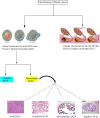
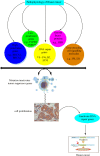
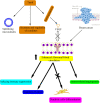
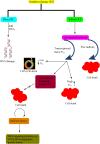

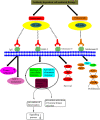
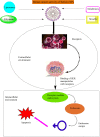
Similar articles
-
Identification of Bombyx mori sericin 4 protein as a new biological adhesive.Int J Biol Macromol. 2019 Jul 1;132:1121-1130. doi: 10.1016/j.ijbiomac.2019.03.166. Epub 2019 Mar 27. Int J Biol Macromol. 2019. PMID: 30928374
-
Processing and characterization of silk sericin from Bombyx mori and its application in biomaterials and biomedicines.Mater Sci Eng C Mater Biol Appl. 2016 Apr 1;61:940-52. doi: 10.1016/j.msec.2015.12.082. Epub 2015 Dec 30. Mater Sci Eng C Mater Biol Appl. 2016. PMID: 26838924 Review.
-
Tuning molecular weights of Bombyx mori (B. mori) silk sericin to modify its assembly structures and materials formation.ACS Appl Mater Interfaces. 2014 Aug 27;6(16):13782-9. doi: 10.1021/am503214g. Epub 2014 Jul 22. ACS Appl Mater Interfaces. 2014. PMID: 25050697 Free PMC article.
-
Fabrication of the FGF1-functionalized sericin hydrogels with cell proliferation activity for biomedical application using genetically engineered Bombyx mori (B. mori) silk.Acta Biomater. 2018 Oct 1;79:239-252. doi: 10.1016/j.actbio.2018.08.031. Epub 2018 Aug 25. Acta Biomater. 2018. PMID: 30149211
-
Silk sericin as building blocks of bioactive materials for advanced therapeutics.J Control Release. 2023 Jan;353:303-316. doi: 10.1016/j.jconrel.2022.11.019. Epub 2022 Dec 6. J Control Release. 2023. PMID: 36402235 Review.
Cited by
-
TBC1D24 promotes the progression of the breast cancer cells via ARF6/PLD axis under hypoxia.Sci Prog. 2025 Jul-Sep;108(3):368504251367649. doi: 10.1177/00368504251367649. Epub 2025 Aug 12. Sci Prog. 2025. PMID: 40790967 Free PMC article.
References
-
- Nisar M, Zamir T. Assessing breast cancer incidence and risk factors from 2005–2015 in Pakistan. J Bahria Univ Med Den Coll 2015; 5: 157–161.
-
- Mody VV, Nounou MI, Bikram M. Novel nanomedicine-based MRI contrast agents for gynecological malignancies. Adv Drug Delivery Rev 2009; 61: 795–807. - PubMed
-
- Perteghella S, Crivelli B, Catenacci L, et al.Stem cell-extracellular vesicles as drug delivery systems: New frontiers for silk/curcumin nanoparticles. Int J Pharm 2017; 520: 86–97. - PubMed
Publication types
MeSH terms
Substances
LinkOut - more resources
Full Text Sources
Medical

